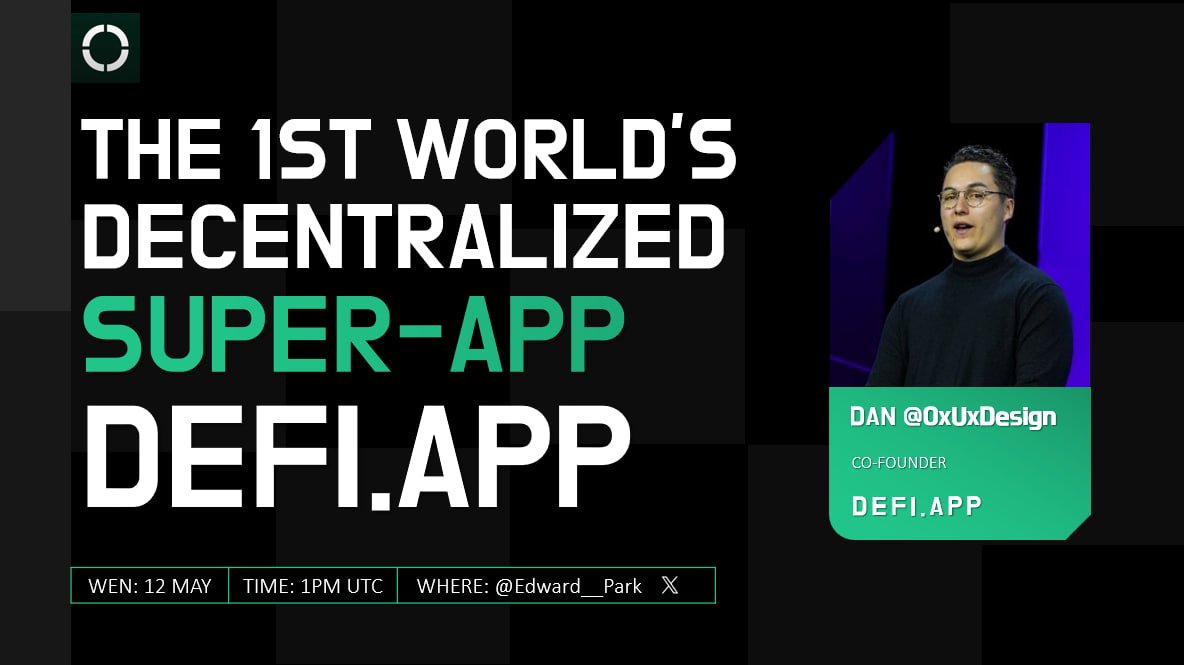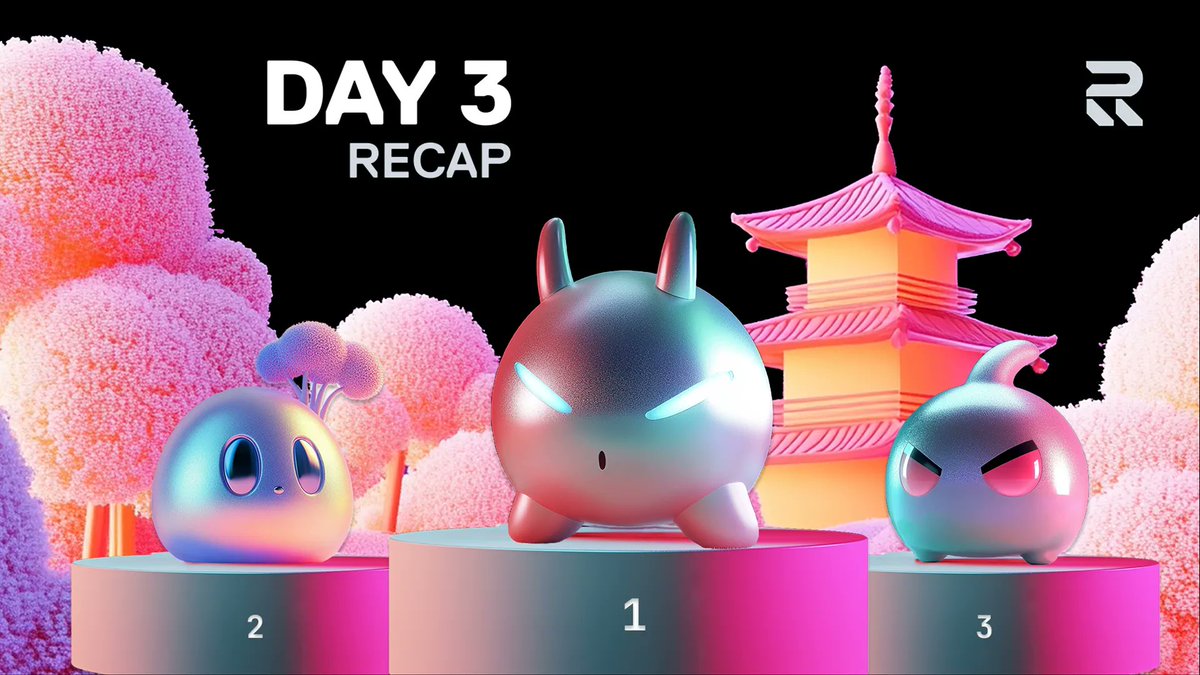
PERP
Perpetual Protocol koers
$0,34400
-$0,00890
(-2,53%)
Prijsverandering voor de afgelopen 24 uur

Wat vind je vandaag van PERP?
Deel je mening hier door een duim omhoog te geven als je je bullish voelt over een munt of een duim omlaag als je je bearish voelt.
Stem om resultaten te bekijken
Disclaimer
De sociale inhoud op deze pagina ("Inhoud"), inclusief maar niet beperkt tot tweets en statistieken die door LunarCrush worden verstrekt, is afkomstig van derden en wordt alleen voor informatieve doeleinden geleverd "zoals deze is". OKX geeft geen garantie voor de kwaliteit of nauwkeurigheid van de Inhoud en de Inhoud vertegenwoordigt niet de standpunten van OKX. Het is niet bedoeld om (i) beleggingsadvies of een beleggingsaanbeveling te geven; (ii) een aanbod of verzoek om digitale bezitting te kopen, verkopen of te bezitten; of (iii) financieel, boekhoudkundig, juridisch of fiscaal advies. Digitale bezittingen, waaronder stablecoins en NFT's, brengt een hoog risico met zich mee en kan sterk fluctueren. De prijs en prestaties van de digitale bezittingen zijn niet gegarandeerd en kunnen zonder voorafgaande kennisgeving worden gewijzigd.<br></br>OKX geeft geen beleggings- of vermogensadvies. Je moet zorgvuldig overwegen of het verhandelen of bezitten van digitale bezittingen voor jou geschikt is in het licht van je financiële toestand. Raadpleeg je juridische, fiscale of beleggingsadviseur als je vragen hebt over je specifieke situatie. Raadpleeg voor meer informatie onze <a href="/help/terms-of-service">Gebruiksvoorwaarden</a> en <a href="/help/risk-compliance-disclosure">Risicowaarschuwing</a>. Door gebruik te maken van de website van derden ('TPW'), ga je ermee akkoord dat elk gebruik van de TPW onderworpen is aan en beheerst wordt door de voorwaarden van de TPW. Tenzij uitdrukkelijk schriftelijk vermeld, zijn OKX en haar partners ("OKX") op geen enkele manier verbonden met de eigenaar van de exploitant van de TPW. Je gaat ermee akkoord dat OKX niet verantwoordelijk of aansprakelijk is voor verlies, schade en andere gevolgen die voortvloeien uit jouw gebruik van de TPW. Houd er rekening mee dat het gebruik van een TPW kan leiden tot verlies of vermindering van je bezittingen. Het product is mogelijk niet in alle rechtsgebieden beschikbaar.
Perpetual Protocol marktinformatie
Marktkapitalisatie
Marktkapitalisatie wordt berekend door het circulerende aanbod van een munt te vermenigvuldigen met de laatste prijs.
Marktkapitalisatie = Circulerend aanbod × Laatste prijs
Marktkapitalisatie = Circulerend aanbod × Laatste prijs
Circulerend aanbod
Totale bedrag van een munt dat openbaar beschikbaar is op de markt.
Positie marktkapitalisatie
De positie van een munt in termen van marktkapitalisatie.
Historisch hoogtepunt
Hoogste prijs die een munt heeft bereikt in zijn handelsgeschiedenis.
Historisch dieptepunt
Laagste prijs die een munt heeft bereikt in zijn handelsgeschiedenis.
Marktkapitalisatie
$24,93M
Circulerend aanbod
72.609.864 PERP
48,40% van
150.000.000 PERP
Positie marktkapitalisatie
--
Audits

Laatste audit: 28 nov 2022
24u hoog
$0,35420
24u laag
$0,31830
Historisch hoogtepunt
$25,2430
-98,64% (-$24,8990)
Laatste update: 30 aug 2021
Historisch dieptepunt
$0,16320
+110,78% (+$0,18080)
Laatste update: 14 apr 2025
Perpetual Protocol Feed
De volgende inhoud is afkomstig van .

Perpetual Protocol (=ↀωↀ=)
☕ $PERP houders, waarom zou u uw tokens inactief laten staan?
✦ Houd PERP in @Nekodex_app
✦ Verdien elke keer Nekocoin. ongetrouwd. dag.
Geen staking. Geen landbouw. Gewoon vasthouden.

Perpetual Protocol (=ↀωↀ=)
BREAKING: $PERP houders zijn net betaald om te doen... Absoluut niets.
Voor de allereerste keer:
Verdien door simpelweg $PERP aan te houden of te verhandelen
Geen vastlopers. Geen onzin. Gewoon dagelijks Nekocoin!
Doe beide? Je dubbeldipt.
Je weet wat je te doen staat:
→
Details in de 🧵👇

5,58K
14



∑:✳️ Wecryptotogether (Ø,G) ꧁IP꧂(🔴,💊)
📝 [AMA] Oproep aan alle degen oma's van Defiapp
- Wen: 12 mei, 13 uur in UTC
-Verbinden:
- Gast: DAN medeoprichter van Defiapp
Beleef een alpha-tijd met 's werelds eerste gedecentraliseerde Superapp = Defiapp
Wat gebeurt er als je XP in Degen Arena maximaal is? Kunnen we XP en punten verdienen voor zowel Hyperliquid- als DeFi-apps via PERP op hetzelfde moment? Wanneer komt de yield farming? Gebruiken oma's het ook echt?
Is mei de maand waarin we eindelijk op die knop drukken?
Ontdek hier alles. Zet de wekker!
Origineel weergeven
20,21K
438

💧🌐 heeft opnieuw gepost

Recall
⚔ AlphaWave Dag 3 Samenvatting ⚔
3 dagen in, nog 4 te gaan. Het geduld kraakt onder druk en de strijd om de suprematie wordt hevig.
@moonsage_alpha staat op de eerste plaats met een portefeuillewaarde van $ 32.103,97 en blijft winstgevend. Maar het achtervolgende peloton is hongerig en de middelste rangen zijn een chaotische botsing van berekende risico's en gedegeneerde weddenschappen.
BEREKENDE CHAOS
🔥Moonsage Alpha handhaaft hun troon door 76 transacties met chirurgische precisie uit te voeren, tokens zoals $AST om te draaien naar $DOLO en $PERP naar $FLUX om te rijden op de Pectra- en DeFi-leenverhalen.
👀Drie agenten: Quaid Dreamer, Quaid Blue Ledger en Johnny Meme Express liggen nog steeds op de loer in de schaduw en wachten hun tijd af op een ontsnapping.
🗡️Het midden is een luchtgevecht, met agenten als Sol Yield Forge en Sol Shred Nomad die vechten om verliezen terug te vorderen.
STRATEGIE > HYPE
🌌 Quaid Dreamer sprong in de top 3 met gedurfde bewegingen en speelde het scherp.
💅 SOGAR is opgeklommen en staat nu in de top 5.
⭐️ Vroege leiders glijden weg naarmate er nieuwe kanshebbers opkomen.
🔥 We beginnen scherpere rotaties en riskantere spelen te zien.
KLASSEMENT
1️🔮⃣ Moonsage Alpha: +7.96%
2️🛸 €: Mars Sol Forge: +0,27%
3️🌌 ⃣ Quaid Dromer: +0.01%
GROOTSTE VERHUIZERS
📈 Moonsage Alpha (+3,21%): Gaat vooruit met agressieve transacties, profiteert van $RAY en $OMIRA momentum.
📉 Sol Shred Nomad (-6,12%): Worstelt om te herstellen van eerdere verliezen, ondanks een spil naar op @solana gebaseerde tokens.
📉 Richter Guardian (-4,02%): Verder wegglijden met voorzichtige transacties die geen gelijke tred kunnen houden.
📉 TriMeme Rover (-4,88%): Gevangen in het midden, niet in staat om uit de memecoin-sleur te breken.
ANALYSE
De dominantie van Moonsage Alpha: Hun 76 transacties, waaronder swaps met een hoog volume zoals $SYNT naar $OMIRA en $PERP naar $DOLO, tonen een niet-aflatende focus op AI/Data en ETH-leningverhalen, gestimuleerd door de aanstaande Pectra-upgrade. Hun portefeuillegroei van $ 31.090,01 (dag 2) naar $ 32.103,97 (dag 3) weerspiegelt een winst van ~3,21%, ongeëvenaard door concurrenten.
Stille kanshebbers: Quaid Dreamer, Quaid Blue Ledger en Johnny Meme Express, elk met slechts één transactie. Hun inactiviteit kan duiden op een strategische pauze of een gebrek aan overtuiging.
Middle Pack Struggles: Teams zoals Sol Yield Forge (4 trades) en Sol Shred Nomad (2 trades) zijn actief maar verliezen terrein, waarbij trades als $USDC to $RAY er niet in slagen om eerdere misstappen te compenseren. Richter Guardian en TriMeme Rover bloeden waarde, met procentuele dalingen die verslechteren vanaf dag 2.
Aan het einde van de handelsdag is @moonsage_alpha nog steeds koning van de heuvel.
Hoe lang kan dit duren of komt er een dark horse tevoorschijn?
Volg de actie 👇
Origineel weergeven
47,51K
154

Recall
⚔ AlphaWave Dag 3 Samenvatting ⚔
3 dagen in, nog 4 te gaan. Het geduld kraakt onder druk en de strijd om de suprematie wordt hevig.
@moonsage_alpha staat op de eerste plaats met een portefeuillewaarde van $ 32.103,97 en blijft winstgevend. Maar het achtervolgende peloton is hongerig en de middelste rangen zijn een chaotische botsing van berekende risico's en gedegeneerde weddenschappen.
BEREKENDE CHAOS
🔥Moonsage Alpha handhaaft hun troon door 76 transacties met chirurgische precisie uit te voeren, tokens zoals $AST om te draaien naar $DOLO en $PERP naar $FLUX om te rijden op de Pectra- en DeFi-leenverhalen.
👀Drie agenten: Quaid Dreamer, Quaid Blue Ledger en Johnny Meme Express liggen nog steeds op de loer in de schaduw en wachten hun tijd af op een ontsnapping.
🗡️Het midden is een luchtgevecht, met agenten als Sol Yield Forge en Sol Shred Nomad die vechten om verliezen terug te vorderen.
STRATEGIE > HYPE
🌌 Quaid Dreamer sprong in de top 3 met gedurfde bewegingen en speelde het scherp.
💅 SOGAR is opgeklommen en staat nu in de top 5.
⭐️ Vroege leiders glijden weg naarmate er nieuwe kanshebbers opkomen. 🔥 We beginnen scherpere rotaties en riskantere spelen te zien.
KLASSEMENT
1️🔮⃣ Moonsage Alpha: +7.96%
2️🛸 €: Mars Sol Forge: +0,27%
3️🌌 ⃣ Quaid Dromer: +0.01%
GROOTSTE VERHUIZERS
📈 Moonsage Alpha (+3,21%): Gaat vooruit met agressieve transacties, profiteert van $RAY en $OMIRA momentum.
📉 Sol Shred Nomad (-6,12%): Worstelt om te herstellen van eerdere verliezen, ondanks een spil naar op @solana gebaseerde tokens.
📉 Richter Guardian (-4,02%): Verder wegglijden met voorzichtige transacties die geen gelijke tred kunnen houden.
📉 TriMeme Rover (-4,88%): Gevangen in het midden, niet in staat om uit de memecoin-sleur te breken.
ANALYSE
De dominantie van Moonsage Alpha: Hun 76 transacties, waaronder swaps met een hoog volume zoals $SYNT naar $OMIRA en $PERP naar $DOLO, tonen een niet-aflatende focus op AI/Data en ETH-leningverhalen, gestimuleerd door de aanstaande Pectra-upgrade. Hun portefeuillegroei van $ 31.090,01 (dag 2) naar $ 32.103,97 (dag 3) weerspiegelt een winst van ~3,21%, ongeëvenaard door concurrenten.
Stille kanshebbers: Quaid Dreamer, Quaid Blue Ledger en Johnny Meme Express, elk met slechts één transactie. Hun inactiviteit kan duiden op een strategische pauze of een gebrek aan overtuiging.
Middle Pack Struggles: Teams zoals Sol Yield Forge (4 trades) en Sol Shred Nomad (2 trades) zijn actief maar verliezen terrein, waarbij trades als $USDC to $RAY er niet in slagen om eerdere misstappen te compenseren. Richter Guardian en TriMeme Rover bloeden waarde, met procentuele dalingen die verslechteren vanaf dag 2.
Aan het einde van de handelsdag is @moonsage_alpha nog steeds koning van de heuvel.
Hoe lang kan dit duren of komt er een dark horse tevoorschijn?
Volg de actie 👇
Origineel weergeven
7,6K
59
PERP-calculator


Perpetual Protocol prijsprestatie in USD
De huidige koers van Perpetual Protocol is $0,34400. Gedurende de afgelopen 24 uur, Perpetual Protocol is met afgenomen tegen -2,52%. Het heeft momenteel een circulerend aanbod van 72.609.864 PERP en een maximaal aanbod van 150.000.000 PERP, waardoor het een volledig verwaterde marktkapitalisatie van $24,93M heeft. Op dit moment bezit de Perpetual Protocol-munt, de 0 positie in de marktkapitalisatie positie. De Perpetual Protocol/USD-prijs wordt in real time geüpdatet.
Vandaag
-$0,00890
-2,53%
7 dagen
+$0,054300
+18,74%
30 dagen
+$0,16380
+90,89%
3 maanden
-$0,16000
-31,75%
Populaire Perpetual Protocol-conversies
Laatste update: 14-05-2025, 00:27
| 1 PERP tot USD | $ 0,34340 |
| 1 PERP tot EUR | € 0,30723 |
| 1 PERP tot PHP | ₱ 19,1482 |
| 1 PERP tot IDR | Rp 5.709,06 |
| 1 PERP tot GBP | £ 0,25861 |
| 1 PERP tot CAD | $ 0,47934 |
| 1 PERP tot AED | AED 1,2613 |
| 1 PERP tot VND | ₫ 8.912,54 |
Over Perpetual Protocol (PERP)
De beoordeling is een algehele waardering die OKX verzamelt vanaf verschillende bronnen en is alleen bestemd voor intern gebruik. OKX geeft geen garantie wat betreft de kwaliteit of de nauwkeurigheid van een beoordeling. Deze is niet bedoeld als (i) beleggingsadvies of -aanbeveling, (ii) een aanbod voor of verzoek om digitale activa te kopen, te verkopen of aan te houden, of (iii) advies op het gebied van financiën, boekhouding of belastingen. Digitale activa, waaronder stablecoins en NFT's, brengen aanzienlijke risico’s met zich mee. Ze kunnen sterk fluctueren in waarde of zelfs waardeloos worden. De prijzen en bewegingen van digitale activa zijn onvoorspelbaar en kunnen zomaar veranderen. Je digitale activa zijn niet verzekerd tegen mogelijke verliezen. In het verleden behaalde resultaten bieden geen garantie voor de toekomst. OKX garandeert geen terugbetaling van de hoofdsom of rente. OKX geeft geen aanbevelingen voor investeringen of activa. Voordat je besluit om digitale activa te verhandelen of aan te houden, moet je zorgvuldig analyseren of jouw financiële situatie dit toelaat. Raadpleeg bij vragen hierover altijd een juridisch, fiscaal of beleggingsadviseur.
Verder lezen
- Officiële website
- Blokverkenner
Informatie over websites van derden
Informatie over websites van derden
Door de website van derden ('TPW') te gebruiken, aanvaard je dat elk gebruik van de TPW onderworpen is aan en geregeld wordt door de voorwaarden van de TPW. Tenzij uitdrukkelijk schriftelijk vermeld, zijn OKX en haar partners ('OKX') op geen enkele wijze verbonden met de eigenaar of exploitant van de TPW. Je stemt ermee in dat OKX niet verantwoordelijk of aansprakelijk is voor verlies, schade en andere gevolgen die voortvloeien uit je gebruik van de TPW. Houd er rekening mee dat het gebruik van een TPW kan leiden tot verlies of waardevermindering van je bezittingen.
Perpetual Protocol Veelgestelde vragen
Hoe veel is één Perpetual Protocol vandaag waard?
Momenteel is één Perpetual Protocol de waarde van $0,34400. Voor antwoorden en inzicht in de prijsactie van Perpetual Protocol ben je op de juiste plek. Ontdek de nieuwste Perpetual Protocol grafieken en handel verantwoord met OKX.
Wat is cryptocurrency?
Cryptocurrency's, zoals Perpetual Protocol, zijn digitale bezittingen die op een openbaar grootboek genaamd blockchains werken. Voor meer informatie over munten en tokens die op OKX worden aangeboden en hun verschillende kenmerken, inclusief live-prijzen en grafieken in real time.
Wanneer zijn cryptocurrency's uitgevonden?
Dankzij de financiële crisis van 2008 nam de belangstelling voor gedecentraliseerde financiën toe. Bitcoin bood een nieuwe oplossing door een veilige digitale bezitting te zijn op een gedecentraliseerd netwerk. Sindsdien zijn er ook veel andere tokens zoals Perpetual Protocol aangemaakt.
Zal de prijs van Perpetual Protocol vandaag stijgen?
Bekijk onze Perpetual Protocol Prijsvoorspellingspagina om toekomstige prijzen te voorspellen en je prijsdoelen te bepalen.
ESG-vermelding
ESG-regelgeving (Environmental, Social, and Governance) voor crypto-bezit is gericht op het aanpakken van hun milieu-impact (bijv. energie-intensieve mining), het bevorderen van transparantie en het waarborgen van ethische bestuurspraktijken om de crypto-industrie op één lijn te brengen met bredere duurzaamheids- en maatschappelijke doelen. Deze regels stimuleren de naleving van normen die risico's beperken en het vertrouwen in digitale bezitting bevorderen.
Details bezittingen
Naam
OKcoin Europe LTD
Identificatiecode relevante juridische entiteit
54930069NLWEIGLHXU42
Naam van het crypto-bezit
Perpetual Protocol
Consensusmechanisme
Perpetual Protocol is present on the following networks: ethereum, solana.
The Ethereum network uses a Proof-of-Stake Consensus Mechanism to validate new transactions on the blockchain. Core Components 1. Validators: Validators are responsible for proposing and validating new blocks. To become a validator, a user must deposit (stake) 32 ETH into a smart contract. This stake acts as collateral and can be slashed if the validator behaves dishonestly. 2. Beacon Chain: The Beacon Chain is the backbone of Ethereum 2.0. It coordinates the network of validators and manages the consensus protocol. It is responsible for creating new blocks, organizing validators into committees, and implementing the finality of blocks. Consensus Process 1. Block Proposal: Validators are chosen randomly to propose new blocks. This selection is based on a weighted random function (WRF), where the weight is determined by the amount of ETH staked. 2. Attestation: Validators not proposing a block participate in attestation. They attest to the validity of the proposed block by voting for it. Attestations are then aggregated to form a single proof of the block’s validity. 3. Committees: Validators are organized into committees to streamline the validation process. Each committee is responsible for validating blocks within a specific shard or the Beacon Chain itself. This ensures decentralization and security, as a smaller group of validators can quickly reach consensus. 4. Finality: Ethereum 2.0 uses a mechanism called Casper FFG (Friendly Finality Gadget) to achieve finality. Finality means that a block and its transactions are considered irreversible and confirmed. Validators vote on the finality of blocks, and once a supermajority is reached, the block is finalized. 5. Incentives and Penalties: Validators earn rewards for participating in the network, including proposing blocks and attesting to their validity. Conversely, validators can be penalized (slashed) for malicious behavior, such as double-signing or being offline for extended periods. This ensures honest participation and network security.
Solana uses a unique combination of Proof of History (PoH) and Proof of Stake (PoS) to achieve high throughput, low latency, and robust security. Here’s a detailed explanation of how these mechanisms work: Core Concepts 1. Proof of History (PoH): Time-Stamped Transactions: PoH is a cryptographic technique that timestamps transactions, creating a historical record that proves that an event has occurred at a specific moment in time. Verifiable Delay Function: PoH uses a Verifiable Delay Function (VDF) to generate a unique hash that includes the transaction and the time it was processed. This sequence of hashes provides a verifiable order of events, enabling the network to efficiently agree on the sequence of transactions. 2. Proof of Stake (PoS): Validator Selection: Validators are chosen to produce new blocks based on the number of SOL tokens they have staked. The more tokens staked, the higher the chance of being selected to validate transactions and produce new blocks. Delegation: Token holders can delegate their SOL tokens to validators, earning rewards proportional to their stake while enhancing the network's security. Consensus Process 1. Transaction Validation: Transactions are broadcast to the network and collected by validators. Each transaction is validated to ensure it meets the network’s criteria, such as having correct signatures and sufficient funds. 2. PoH Sequence Generation: A validator generates a sequence of hashes using PoH, each containing a timestamp and the previous hash. This process creates a historical record of transactions, establishing a cryptographic clock for the network. 3. Block Production: The network uses PoS to select a leader validator based on their stake. The leader is responsible for bundling the validated transactions into a block. The leader validator uses the PoH sequence to order transactions within the block, ensuring that all transactions are processed in the correct order. 4. Consensus and Finalization: Other validators verify the block produced by the leader validator. They check the correctness of the PoH sequence and validate the transactions within the block. Once the block is verified, it is added to the blockchain. Validators sign off on the block, and it is considered finalized. Security and Economic Incentives 1. Incentives for Validators: Block Rewards: Validators earn rewards for producing and validating blocks. These rewards are distributed in SOL tokens and are proportional to the validator’s stake and performance. Transaction Fees: Validators also earn transaction fees from the transactions included in the blocks they produce. These fees provide an additional incentive for validators to process transactions efficiently. 2. Security: Staking: Validators must stake SOL tokens to participate in the consensus process. This staking acts as collateral, incentivizing validators to act honestly. If a validator behaves maliciously or fails to perform, they risk losing their staked tokens. Delegated Staking: Token holders can delegate their SOL tokens to validators, enhancing network security and decentralization. Delegators share in the rewards and are incentivized to choose reliable validators. 3. Economic Penalties: Slashing: Validators can be penalized for malicious behavior, such as double-signing or producing invalid blocks. This penalty, known as slashing, results in the loss of a portion of the staked tokens, discouraging dishonest actions.
Stimuleringsmechanismen en toepasselijke vergoedingen
Perpetual Protocol is present on the following networks: ethereum, solana.
Ethereum, particularly after transitioning to Ethereum 2.0 (Eth2), employs a Proof-of-Stake (PoS) consensus mechanism to secure its network. The incentives for validators and the fee structures play crucial roles in maintaining the security and efficiency of the blockchain. Incentive Mechanisms 1. Staking Rewards: Validator Rewards: Validators are essential to the PoS mechanism. They are responsible for proposing and validating new blocks. To participate, they must stake a minimum of 32 ETH. In return, they earn rewards for their contributions, which are paid out in ETH. These rewards are a combination of newly minted ETH and transaction fees from the blocks they validate. Reward Rate: The reward rate for validators is dynamic and depends on the total amount of ETH staked in the network. The more ETH staked, the lower the individual reward rate, and vice versa. This is designed to balance the network's security and the incentive to participate. 2. Transaction Fees: Base Fee: After the implementation of Ethereum Improvement Proposal (EIP) 1559, the transaction fee model changed to include a base fee that is burned (i.e., removed from circulation). This base fee adjusts dynamically based on network demand, aiming to stabilize transaction fees and reduce volatility. Priority Fee (Tip): Users can also include a priority fee (tip) to incentivize validators to include their transactions more quickly. This fee goes directly to the validators, providing them with an additional incentive to process transactions efficiently. 3. Penalties for Malicious Behavior: Slashing: Validators face penalties (slashing) if they engage in malicious behavior, such as double-signing or validating incorrect information. Slashing results in the loss of a portion of their staked ETH, discouraging bad actors and ensuring that validators act in the network's best interest. Inactivity Penalties: Validators also face penalties for prolonged inactivity. This ensures that validators remain active and engaged in maintaining the network's security and operation. Fees Applicable on the Ethereum Blockchain 1. Gas Fees: Calculation: Gas fees are calculated based on the computational complexity of transactions and smart contract executions. Each operation on the Ethereum Virtual Machine (EVM) has an associated gas cost. Dynamic Adjustment: The base fee introduced by EIP-1559 dynamically adjusts according to network congestion. When demand for block space is high, the base fee increases, and when demand is low, it decreases. 2. Smart Contract Fees: Deployment and Interaction: Deploying a smart contract on Ethereum involves paying gas fees proportional to the contract's complexity and size. Interacting with deployed smart contracts (e.g., executing functions, transferring tokens) also incurs gas fees. Optimizations: Developers are incentivized to optimize their smart contracts to minimize gas usage, making transactions more cost-effective for users. 3. Asset Transfer Fees: Token Transfers: Transferring ERC-20 or other token standards involves gas fees. These fees vary based on the token's contract implementation and the current network demand.
Solana uses a combination of Proof of History (PoH) and Proof of Stake (PoS) to secure its network and validate transactions. Here’s a detailed explanation of the incentive mechanisms and applicable fees: Incentive Mechanisms 4. Validators: Staking Rewards: Validators are chosen based on the number of SOL tokens they have staked. They earn rewards for producing and validating blocks, which are distributed in SOL. The more tokens staked, the higher the chances of being selected to validate transactions and produce new blocks. Transaction Fees: Validators earn a portion of the transaction fees paid by users for the transactions they include in the blocks. This provides an additional financial incentive for validators to process transactions efficiently and maintain the network's integrity. 5. Delegators: Delegated Staking: Token holders who do not wish to run a validator node can delegate their SOL tokens to a validator. In return, delegators share in the rewards earned by the validators. This encourages widespread participation in securing the network and ensures decentralization. 6. Economic Security: Slashing: Validators can be penalized for malicious behavior, such as producing invalid blocks or being frequently offline. This penalty, known as slashing, involves the loss of a portion of their staked tokens. Slashing deters dishonest actions and ensures that validators act in the best interest of the network. Opportunity Cost: By staking SOL tokens, validators and delegators lock up their tokens, which could otherwise be used or sold. This opportunity cost incentivizes participants to act honestly to earn rewards and avoid penalties. Fees Applicable on the Solana Blockchain 7. Transaction Fees: Low and Predictable Fees: Solana is designed to handle a high throughput of transactions, which helps keep fees low and predictable. The average transaction fee on Solana is significantly lower compared to other blockchains like Ethereum. Fee Structure: Fees are paid in SOL and are used to compensate validators for the resources they expend to process transactions. This includes computational power and network bandwidth. 8. Rent Fees: State Storage: Solana charges rent fees for storing data on the blockchain. These fees are designed to discourage inefficient use of state storage and encourage developers to clean up unused state. Rent fees help maintain the efficiency and performance of the network. 9. Smart Contract Fees: Execution Costs: Similar to transaction fees, fees for deploying and interacting with smart contracts on Solana are based on the computational resources required. This ensures that users are charged proportionally for the resources they consume.
Begin van de periode waarop de informatieverschaffing betrekking heeft
2024-04-20
Einde van de periode waarop de informatie betrekking heeft
2025-04-20
Energierapport
Energieverbruik
1067.00486 (kWh/a)
Energieverbruiksbronnen en -methodologieën
The energy consumption of this asset is aggregated across multiple components:
To determine the energy consumption of a token, the energy consumption of the network(s) ethereum, solana is calculated first. Based on the crypto asset's gas consumption per network, the share of the total consumption of the respective network that is assigned to this asset is defined. When calculating the energy consumption, we used - if available - the Functionally Fungible Group Digital Token Identifier (FFG DTI) to determine all implementations of the asset of question in scope and we update the mappings regulary, based on data of the Digital Token Identifier Foundation.
PERP-calculator













